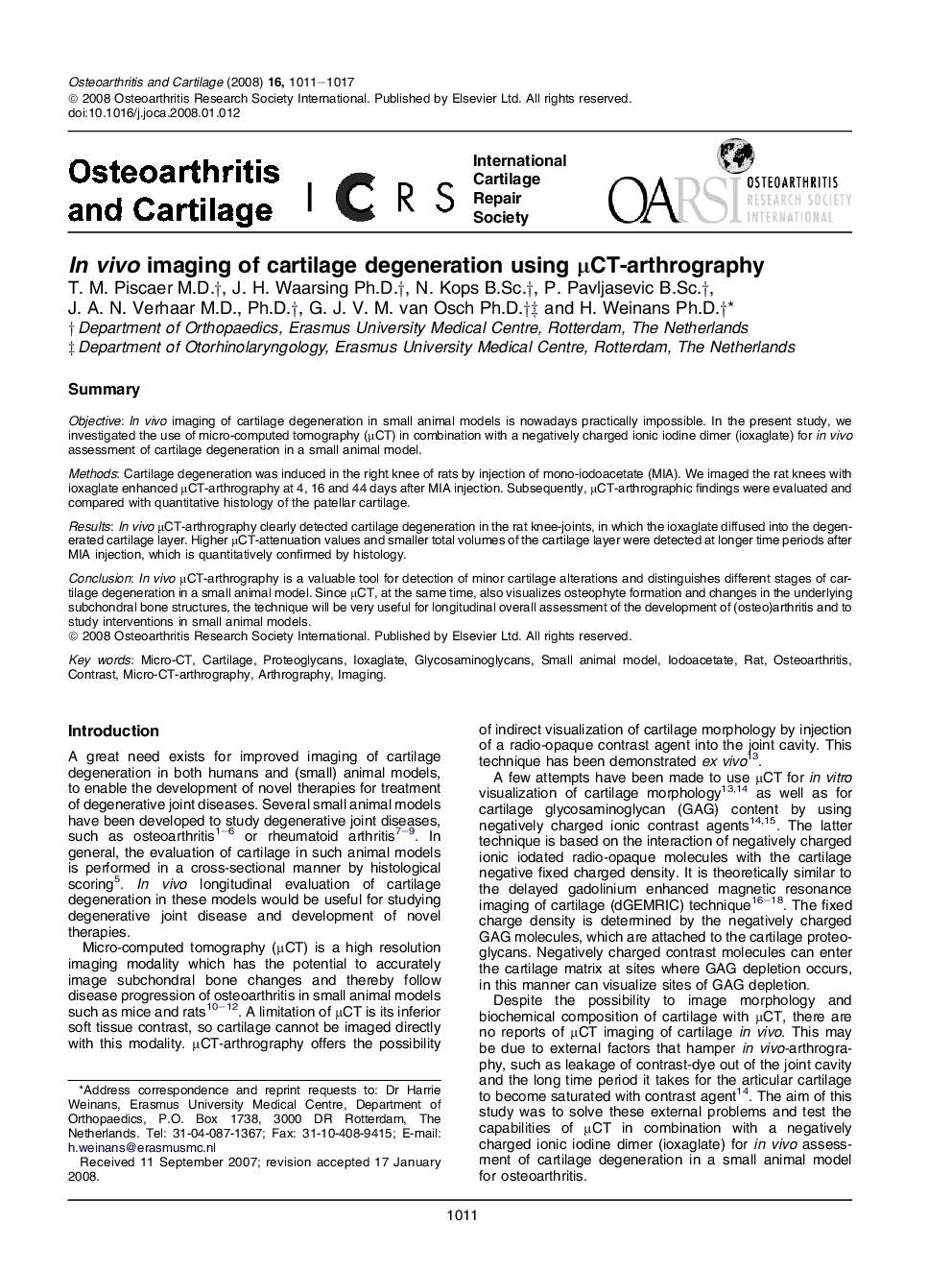| کد مقاله | کد نشریه | سال انتشار | مقاله انگلیسی | نسخه تمام متن |
|---|---|---|---|---|
| 3380976 | 1220230 | 2008 | 7 صفحه PDF | دانلود رایگان |

SummaryObjectiveIn vivo imaging of cartilage degeneration in small animal models is nowadays practically impossible. In the present study, we investigated the use of micro-computed tomography (μCT) in combination with a negatively charged ionic iodine dimer (ioxaglate) for in vivo assessment of cartilage degeneration in a small animal model.MethodsCartilage degeneration was induced in the right knee of rats by injection of mono-iodoacetate (MIA). We imaged the rat knees with ioxaglate enhanced μCT-arthrography at 4, 16 and 44 days after MIA injection. Subsequently, μCT-arthrographic findings were evaluated and compared with quantitative histology of the patellar cartilage.ResultsIn vivo μCT-arthrography clearly detected cartilage degeneration in the rat knee-joints, in which the ioxaglate diffused into the degenerated cartilage layer. Higher μCT-attenuation values and smaller total volumes of the cartilage layer were detected at longer time periods after MIA injection, which is quantitatively confirmed by histology.ConclusionIn vivo μCT-arthrography is a valuable tool for detection of minor cartilage alterations and distinguishes different stages of cartilage degeneration in a small animal model. Since μCT, at the same time, also visualizes osteophyte formation and changes in the underlying subchondral bone structures, the technique will be very useful for longitudinal overall assessment of the development of (osteo)arthritis and to study interventions in small animal models.
Journal: Osteoarthritis and Cartilage - Volume 16, Issue 9, September 2008, Pages 1011–1017